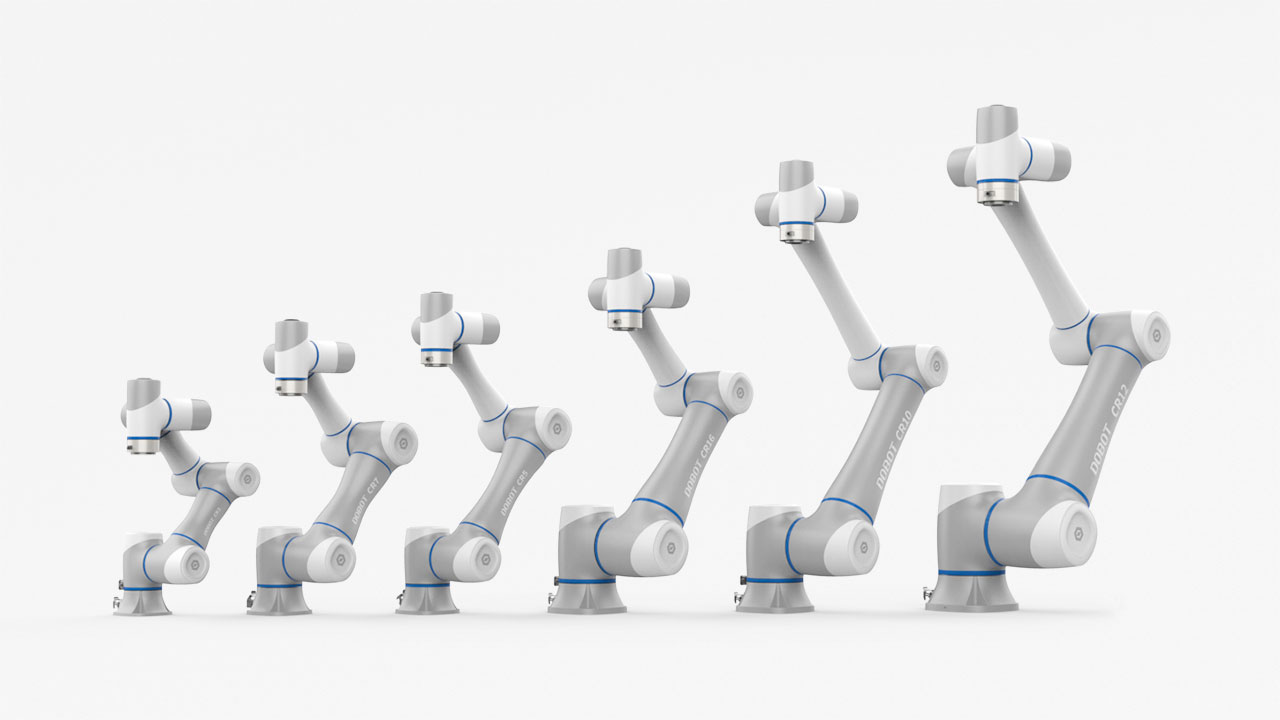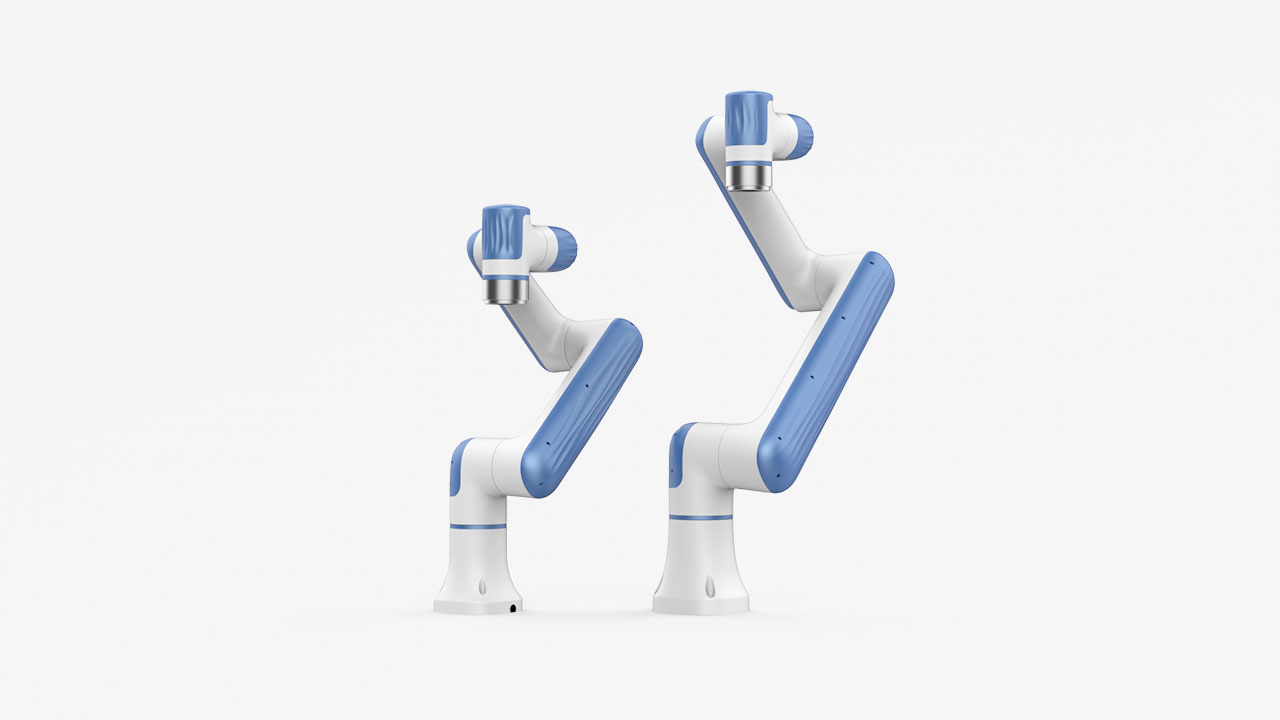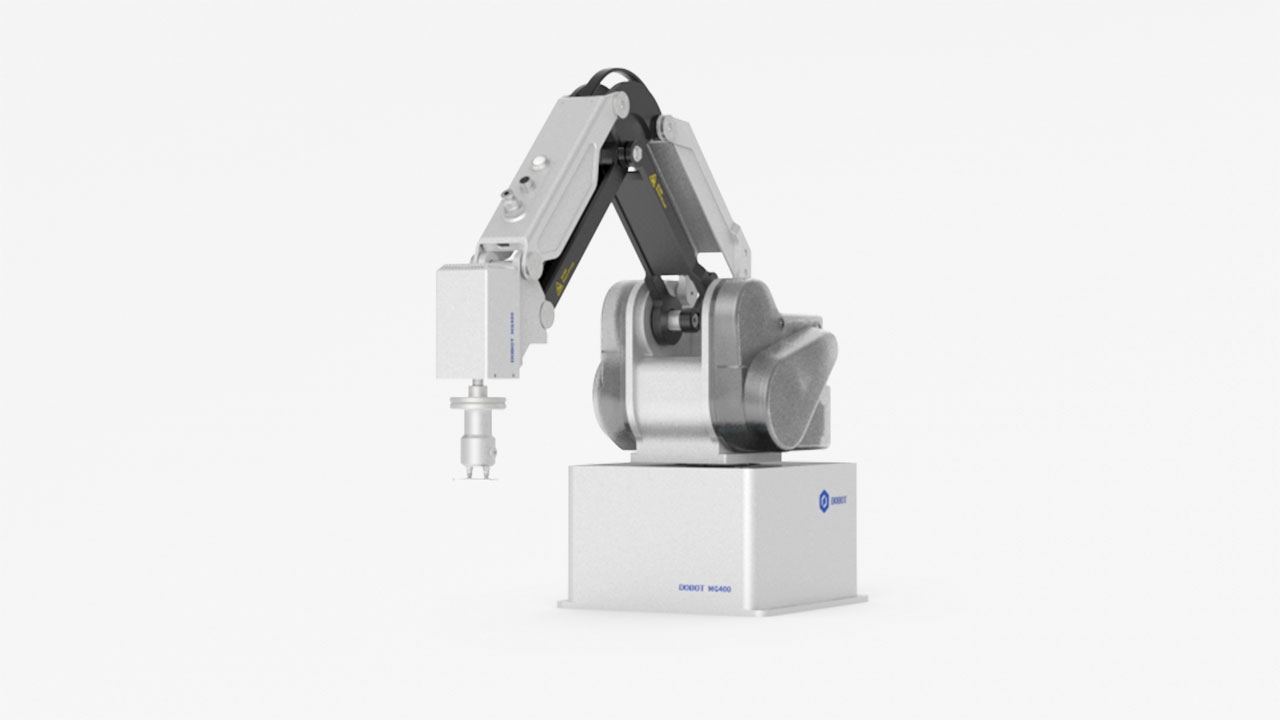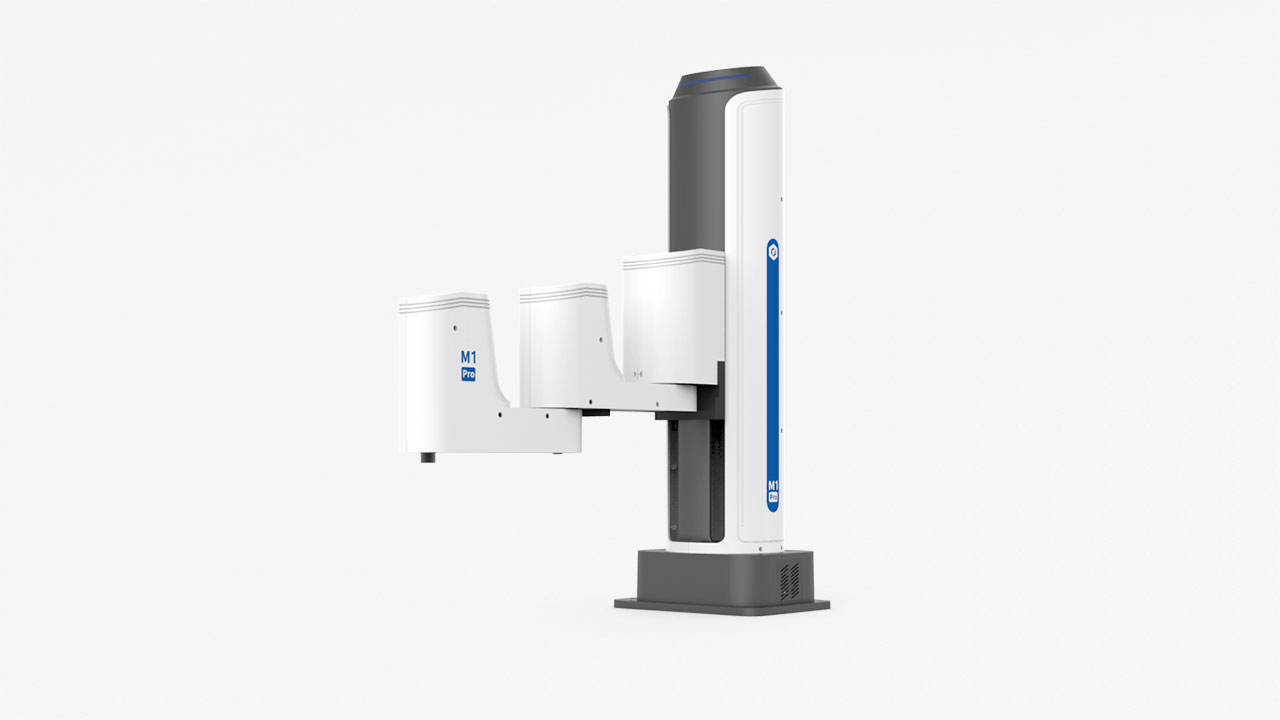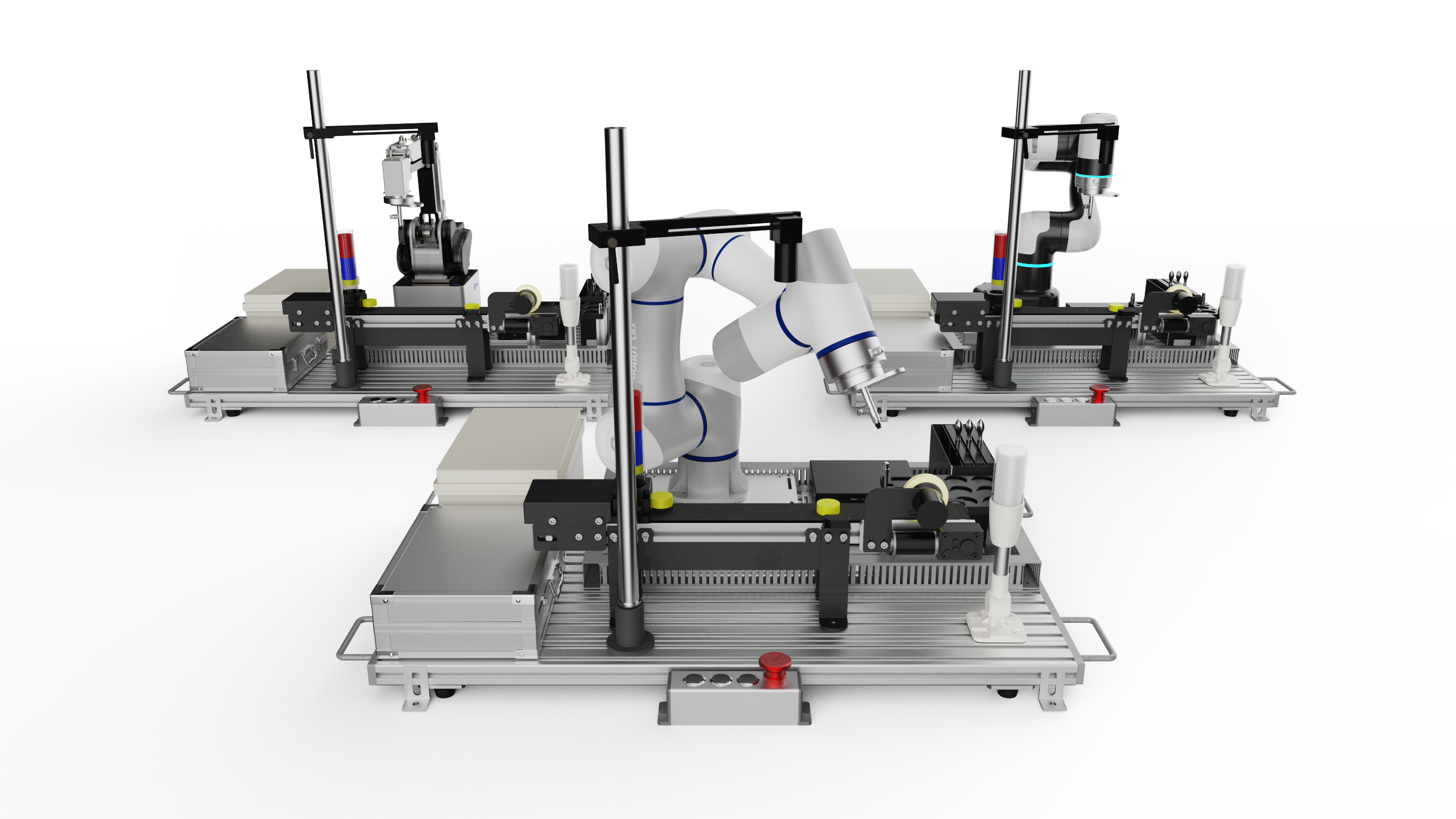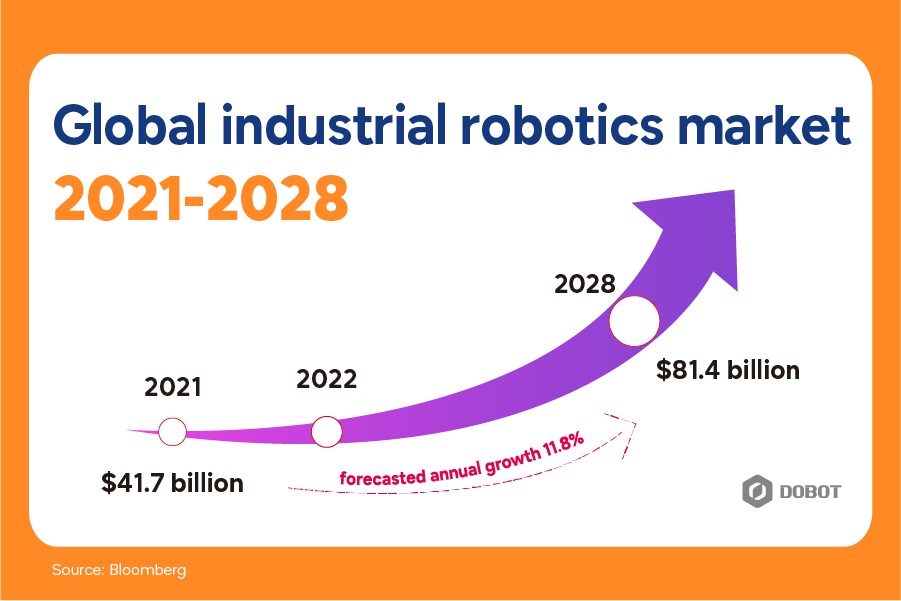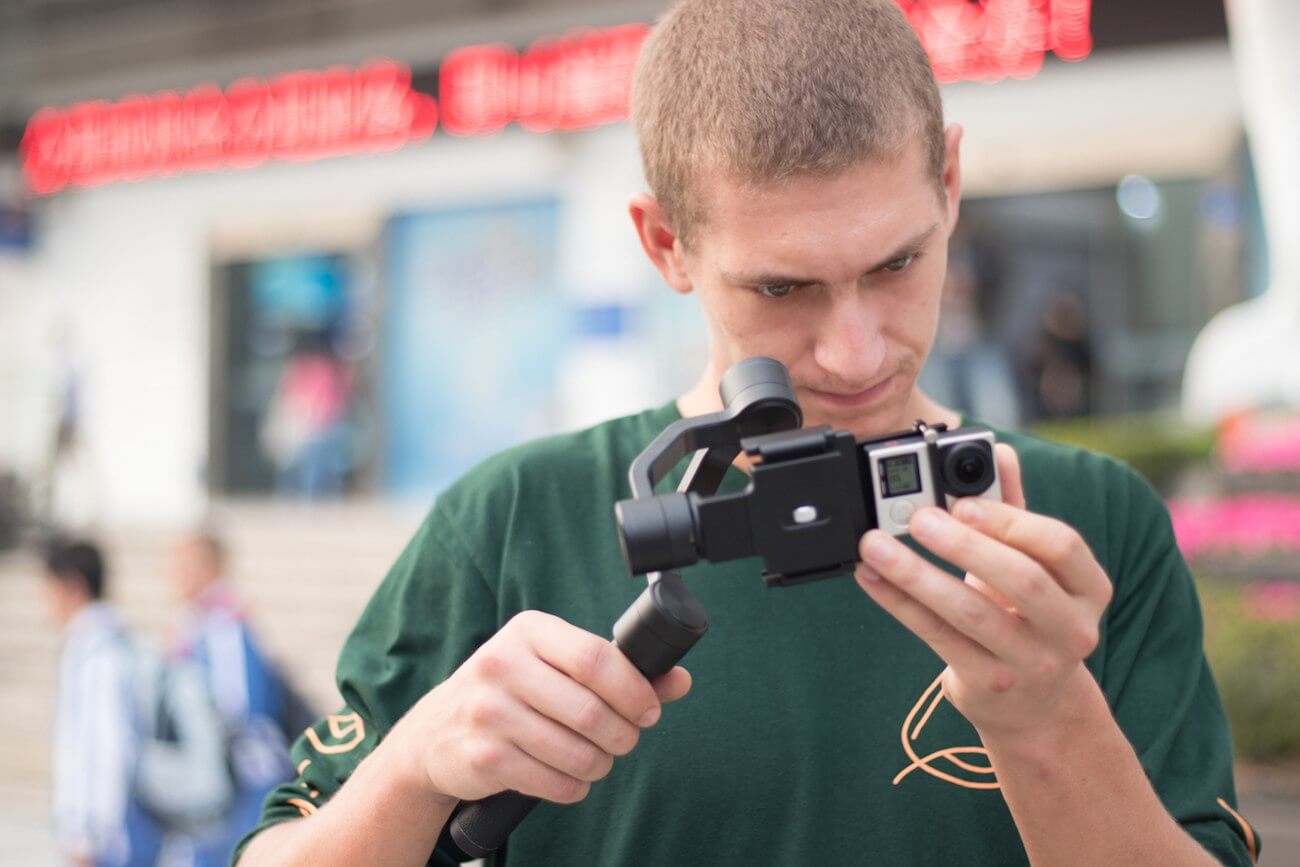Every student in every school is a different individual, which is why it is important for educational institutions to tap into multiple learning styles in an attempt to help their students better understand lessons and memorize information. Utilization of technology is no longer a new learning format in schools. Teachers take advantage of innovations such as computers and multimedia devices to do their jobs more efficiently with satisfying results. The availability of 3D printer for schools has also changed the educational paradigm in terms of engagement level and direct physical interactions with the otherwise theoretical models such as arts and engineering models. A breakdown of the major benefits of the utilization of 3D printers in the educational world is as follows:
- Encourages active learning: the ability to interact with physical models – rather than theoretical ones – comes as great assistance in helping students grasp the subject matter, and this applies to every lesson including math, geography, chemistry, physics, biology, history, etc. For example, students are more interested in learning about fossils or solar system if they can actually touch or hold the physical interpretations of the objects. It encourages students to be more analytical and active in classes.
- Promotes creativity: the positive effects of using 3D printers for educational purposes are felt not only by students but also the teachers. While students are getting more creative with the way they think, interact, and analyze the subject matter, teachers are provided with an abundance of methods to deliver the lessons. A 3D printer in a classroom is like reinforcement for the teachers in their efforts to create a classroom situation conducive for productivity and creativity.
- Intense participation: level of participation on students’ parts is immediately increased with objects created by a 3D printer. Many objects and theories are quite difficult to illustrate, and the technology encourages students to focus on the actual physical manifestation of the objects being discussed. They are now able to see and touch real physical model of any subject matter, making the classroom a place of an interactive learning experience.
- Improves interest in STEM: the use of the 3D printer in school (at least in present days) mainly focuses on 4 major subjects including Science, Technology, Engineering, and Math. The technology can create a miniature of the real-world objects to develop interests among students in those subjects and inspire them to explore deeper. The end goal is to motivate students to choose a career in related fields of study.
Whether you notice this or not, 3D printing technology is affecting our lives and changing the way we think, learn and create the world in many respects. Especially in education, those schools that already apply 3D printing technology in classes have seen happier students and enormous educational improvements. This is obvious, 3D printers transform an abstract theory to a real physical model. By holding it and seeing it, students will be impressed by this real-life experience, thus have an overall understanding of the teaching topic and become more creative.
What to Consider when Choosing 3D Printers for Schools
Also commonly referred to as additive manufacturing, 3D printing (and the technology that started the entire industry) has been around for decades. The earliest equipment was developed in the 1980s, and most 3D printers of today – especially consumer-oriented models – are based on the technology invented in 1988. It was slowly adopted mainly due to the high price tag. As prices go down, the equipment also becomes more popular.
Similar to just about anything else, not all 3D printers are created equal. Some models are designed specifically for the hobbyist (consumers grade), while others are for commercial purposes (industrial grade). In most cases, schools use consumer models because of its affordability and portability, but some commercial models are reasonably priced as well. Here are some factors to consider when choosing a 3D printer for schools:
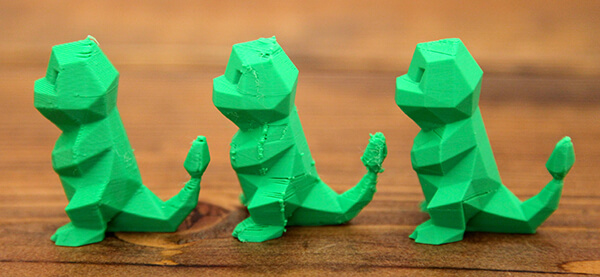
- Quality of Prints: two features that mostly determine 3D printing quality are a number of nozzles and layer resolution. Nozzles are basically print head, with each of them can produce one color, so more nozzles can create objects in multiple colors as well. In a 3D printer, layer resolution is measured in microns (one micron is a millionth of a meter). The number represents the smallest distance that the laser extruder can make in every layer, so smaller number means better details.
- Ease of Use: while it is common for teachers and schools to compromise on fine details in print quality, they should not compromise on the usability factor. Teachers (and especially students) should be able to learn how to use it as quickly as possible.
- Price: in addition to the purchase price of the equipment itself, the shipping cost and import tax must be put into an account, particularly when the 3D printer is shipped from a foreign country. Some manufacturers do not ship all around the world.
Another important but often overlooked factor is maintenance. Ease of maintenance is just as important as any other considerations because the 3D printer is not invulnerable to damages and malfunctions. It is best to choose a 3D printer that comes with a reliable warranty because the cost of repair can be overwhelmingly expensive. Based on those considerations, there are plenty of models that should serve educational purposes in schools quite well. Some of them are listed below in no particular order:

- LulzBot Mini: available at around $1,250, this 3D printer is an often-recommended model for educational purposes. One of its best selling points is the auto-calibration and auto-cleaning nozzle. It is small enough for typical classroom and excellent for beginners. However, it is a noisy affair and print quality is far from great. It also requires PC tethering, so portability is slightly reduced for that. A fair rating is 4 out of 5-stars.
-
-
-
-
-
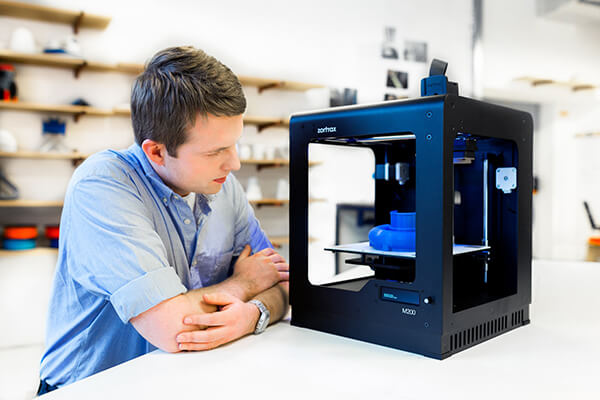
- Zortrax M200: it is one of the older models, but the price tag is quite steep at around $2,000. Compared to its more modern counterparts in the market, the design looks outdated although it does not really affect performance. The biggest drawback is that Zortrax M200 works best only when it handles proprietary filament. This is not to say the 3D printer is not compatible with third-party filaments, but expect some difficulties and a noticeable decrease in print quality. It still deserves 4 out of 5-stars thanks to the ease of use factor and the useful energy-saving feature.
-
-
-
-
-
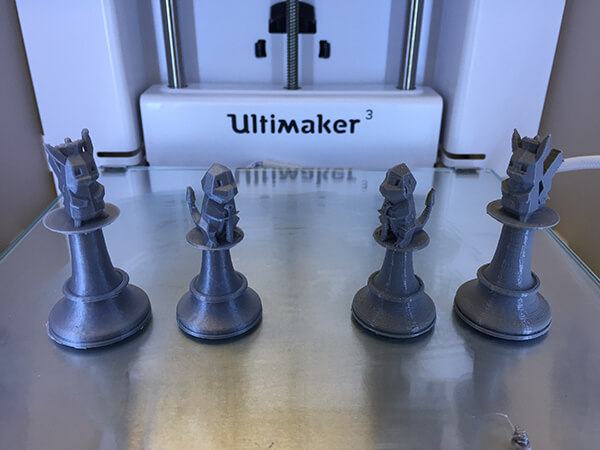
- Ultimaker 3: considered by many as the best 3D printer 2017, the Ultimaker 3 does tick a lot of boxes. It comes with Wi-Fi connectivity, swappable print cores, and great print quality. It would be an ultimate best school 3D Printer if it does not ask for nearly $3,500. Still, it deserves 4.5 out of 5-stars rating.
The ideal 3D printers in schools are therefore those with a combination of industrial-grade quality and affordability. While it seems like an impossible mix of positive traits, one particular model stands out from the crowd: Mooz by Dobot.

In an educational environment where 3D printers must offer versatility and reliability, the model answers the demands by offering a modular design with swappable components to improve functionalities. Instead of just providing 3D printing capabilities, Mooz also comes with laser-etching and CNC-carving functionalities, covering the most common applications for educational purpose. And at only around $700, DOBOT Mooz comes with the affordability everybody looks for.
DOBOT Mooz has been used by many educational institutions such as the Cazenovia High School, FUJITSU, and Volkswagen Academy. Considering the high-asking price of competitors in the market, DOBOT Mooz currently stands as one of the best 3D printers for education and the general consumer.

How Does 3D Printing Technology Serve Education?
From the recent data we received, more and more schools prefer to use more than one 3D printer in their classroom to assist education. Teachers find applying 3D printing in the classroom, that makes the student more engaged and shows greater passion for study. Let's take a look at how 3D printers help with teaching.
What Can Teachers Do with A 3D Printer?
The answer is "literally, almost everything". 3D printing for education is widely adopted by various courses, for example, Art Design, Math, Chemistry, Physics, History, STEM and many more. 3D educational printing plays a more significant role in how we grasp knowledge.
Art Design Course - 3D Printing Is A Testimonial.
A 3D printer in art design class can help learners put their ideas into practice. Only by printing out one designing prototype in a real 3D model can a designer student actually know whether it's a workable design. Without practice and testimonial, there is no other way around that we can test a prototype and prove it's functional.
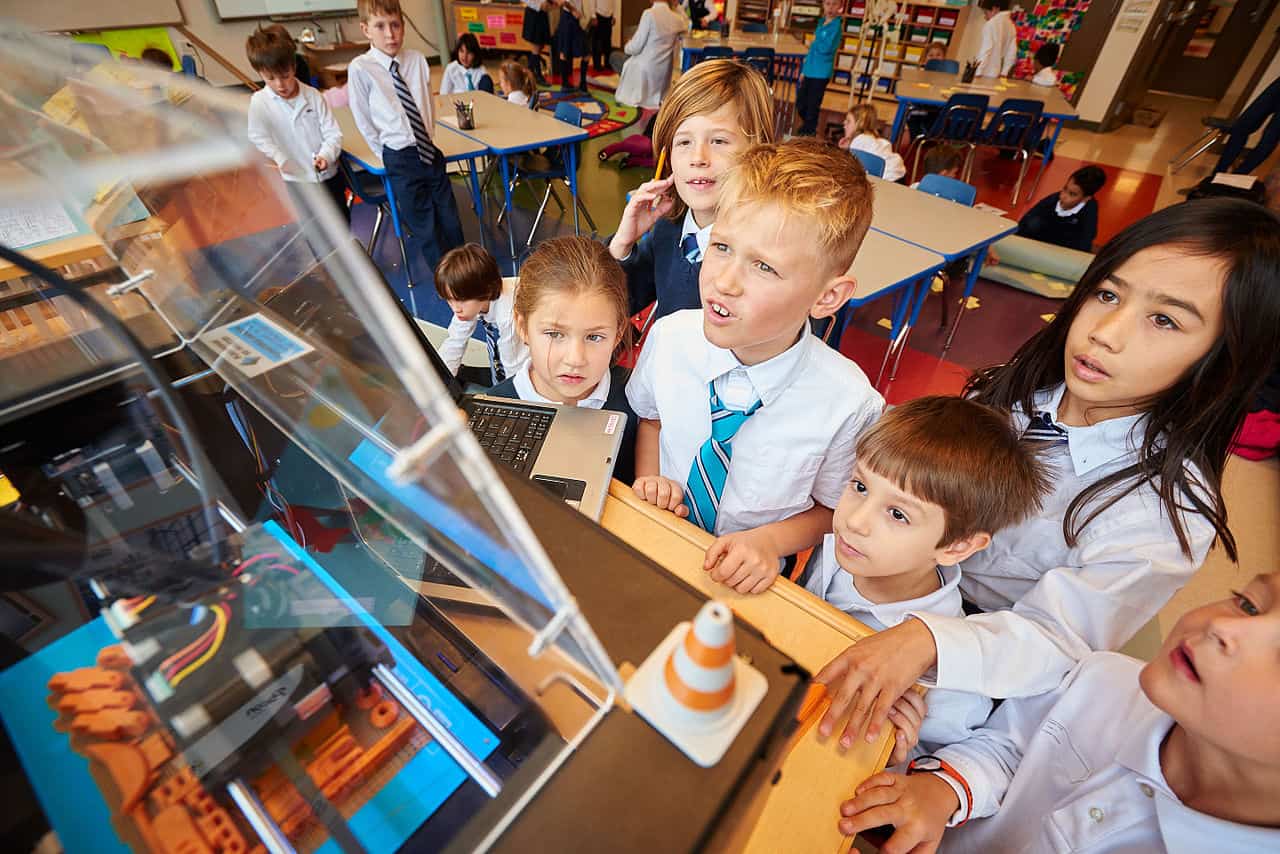
3D modeling helps us find mistakes faster. Once there is a flaw in a design prototype, it’s easier to spot it with a 3D model than just to inspect it in a prototype.
With a real 3D object in hand, students feel a sense of confidence, a sense of accomplishment, and they know they can be creative and do much better.
Math Course - 3D Printing Makes Geometry Easier.
Geometry is always a headache subject for the majority of students. Space intelligence needs cultivation, and 3D printing model fills in the gap between Geometry and reality. For those students having difficulty in imaging intricate space positions, printing these geometric puzzles out can help them better fathom geometry, rather than hate these issues. Through learning and practicing, and eventually, geometry students may overcome the difficulties and love Math, which is the best happy ending for education.
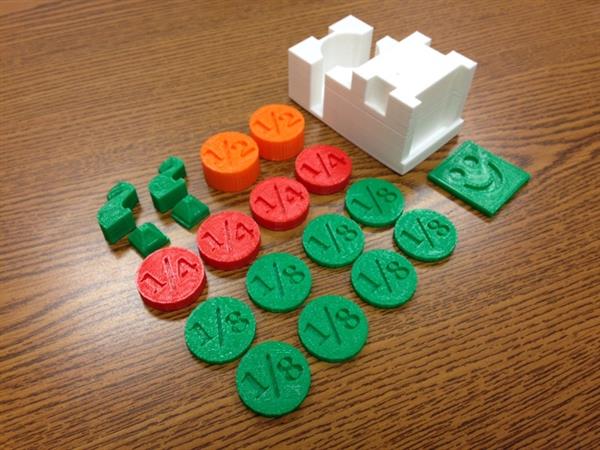
Chemistry Course - 3D Printing Prints Molecules And Atoms.
To Chemistry teachers, trying to impress students with molecules and atoms may not be an easy job, especially in previous years. But thanks to the advancement of technology, teaching can be visualized with 3D prints. Download 3D slicing model for a specific molecule structure (or alternatively, make the model from the ground up) and print it out with a 3D printer. A scaling up molecule will be ready for a Chemistry class show. 3D modeling is always more interesting than 2D book graphics and plain word explanations.

Physics Course - Print Physical Prototypes And Implement Law-testing Plans.
Invite your students to 3D print physical objects in a Physics law. Gather them around to test the law in reality. Such as, when teaching Momentum, use 3D printing to create 2 toy cars with different mass values. Then ask them to give one car a velocity to hit the other motionless car. This way, students will have a memorable experience in learning Physics laws.
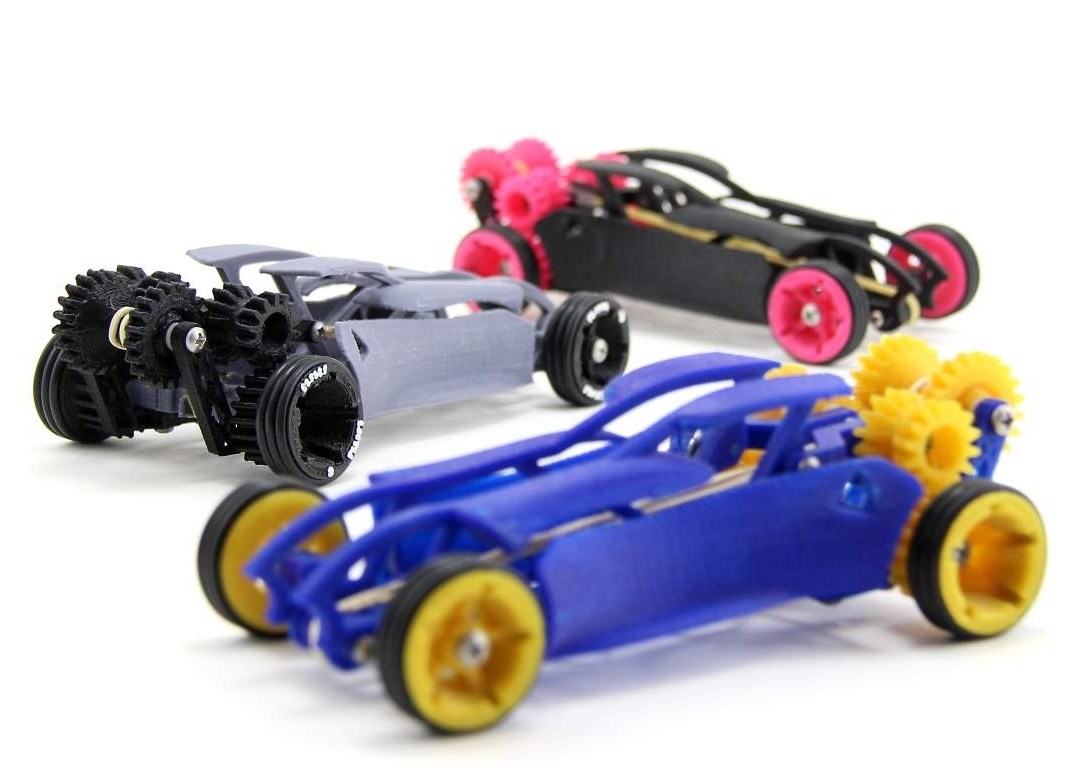
History Course - Won't It Be Great to Print Historical Symbols As Souvenir Gifts.
Printing our historical objects and giving them to classroom listeners is a practical way to make history lesson meaningful. People tend to memorize meaningful things, and that makes sure bad memory won't stand in the way of learning.
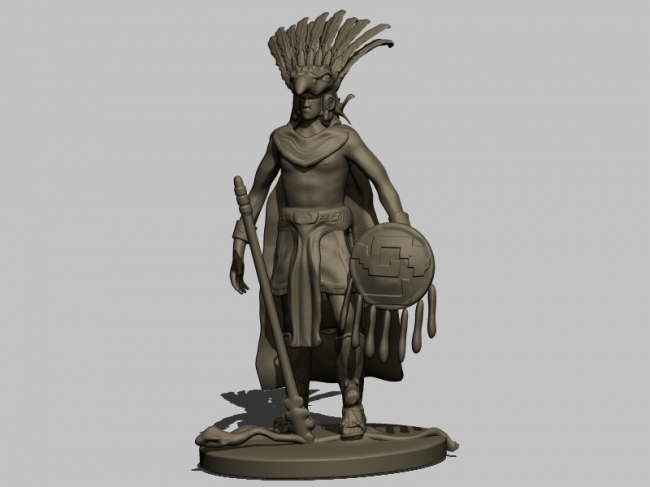
STEM Curriculum - Enhancing STEM Learning with 3D Printings.
STEM, a.k.a. Science, Technology, Engineering, and Math, is the course that is given more and more attention. Without doubts, 3D printing provides an accessible way to create endless fun for STEM curriculum. For example, a STEM teacher can stimulate his students to build a 3D cityscape for Gotham city, or ask his students to build a mini-mansion, etc. The most important role a 3D printer plays here is to spark students' imagination.
3D printers are perfect to make interactive learning aids for all classes since 3D printing objects are tangible and very useful to show details. Given that 3D printing involves the processes of prototyping, slicing prototype, and machine printing, a teacher can group his students into three groups accordingly, fostering teamwork and collaboration.
The Best 3D Printer for School Projects
Educational printing is exciting, while unfortunately, not too many schools afford a 3D printer, owing to the high prices (over $2000). However, there are indeed inexpensive 3D printers. Selecting them out requires a little more patience and some extra time to search online. Luckily, we've done this for you. It's never a bother to take a look at the 3D printer and take it into next schooling consideration.
DOBOT Mooz - An Industrial Desktop 3D Printer.
DOBOT Mooz is a comparatively innovative and cost-effective choice as the best 3d printer for schools. It's not just a 3D printer with unlimited fine prints, but can also be a laser engraving and CNC carving machine.

The support for 3D educational printing will let you print art design prototypes, math models, chemistry molecules and others with filaments in PLA, ABS, PC, and FLEX. With that in mind, you can easily know DOBOT Mooz is an FDM 3D printer. That's correct!
Although it's an FDM 3D printer, Mooz still has a surprisingly excellent performance with an industrial accuracy: 0.05-0.3mm in layer resolution. That ensures a decent look of final prints.
Mooz-Full, priced at $799, supports laser engraving and CNC carving additionally and offers other ways to create school subjects. Just to mention: Those two modules can be much useful for art school students.
Some parameters that may interest you:
- Price: $559 ~ $799
- FDM 3D printer. Support PLA, ABS, PC and FLEX materials.
- Layer Resolution: 0.05-0.3mm.
- Control Precision: 0.005mm.
- Printing Speed: 10-80mm/s.
Thingiverse - The Biggest 3D Community with Greatest Ideas
Hope to print something creative, but have no idea what to print for education? We recommend you to find educational printing inspirations from the world's largest 3D printing community - Thingiverse. It's a community and a design sharing platform. There're over 1.6 million 3D printable designs, you can find what you want for your 3d printing classes. If you're a pro in 3d printing, you can also share your own to see how others print, remix, or use them!
